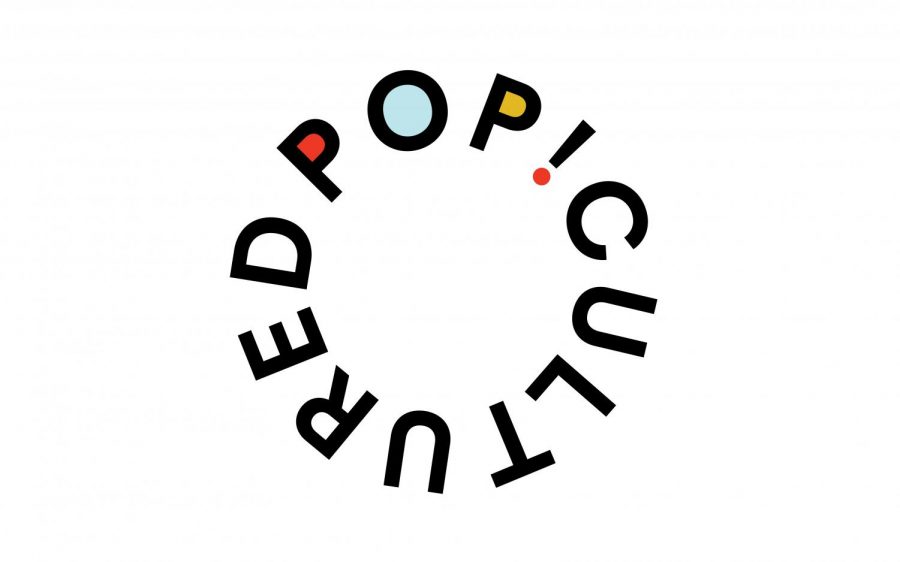Pop-Cultured: The ‘GBF’ Representation in Cinema is Problematic
April 10, 2020
I would hope as a civilization we are past the days of automatically applauding the cinematic representation of sexual minorities simply for its mere existence. Don’t get me wrong — the novelty of seeing queer characters portrayed in film and on TV hasn’t worn off for me yet. It’s a privilege that neither my younger self, nor queer audiences of decades prior, had the opportunity to enjoy. Yet, no matter how exciting it can feel to be superficially acknowledged by a heteronormative film industry, real problems with representation still exist.
A plethora of dangerous stereotypes takes up space in cinema that should be filled by real, honest depictions of queer experiences. The classic “gay best friend” trope is certainly no exception. In this trope, a queer or queer-coded character (often male) is only allowed to exist if attached to a straight protagonist (often female) as a sort of social commodity. This best friend is often a sloppy caricature of LGBT+ stereotypes who receives little to no character development beyond their sexual orientation. Ryan Evans (Lucas Grabeel) of “High School Musical” and Damian Leigh (Daniel Franzese) of “Mean Girls” are two fun examples of the “GBF” in movies that I love. These characters, while enjoyable, make no effort to hide the scriptwriters’ lazy, reductive writing of gay characters.
Instead, here I want to look at two coming-of-age dramas that approach gay-straight friendship in more nuanced ways. I will start with a beautiful film that absolutely crushed my little closeted spirit during the summer before my freshman year of college. “The Perks of Being a Wallflower” changed my life. It does so many things right that I hesitate to even criticize it at all, but alas, here we are.
The Power of Dimensional Characters

Pretty early on in the film, Patrick (Ezra Miller), a closeted but outgoing senior in high school, is exposed as gay to Charlie (Logan Lerman), the straight freshman protagonist. The two form a solid bond that becomes a driving force of the plot, and thankfully the film never treats Miller as an object the way “GBF” tropes often do. Instead, Herman’s effortless connection to Miller is a powerful rejection of the toxic-masculinity-induced homophobia that’s so commonly written into male protagonists, even if subtly. That said, Miller’s character arc still revolves only around his ill-fated sexual longing. When I first watched, his hopeless romanticism within an oppressive world felt equal parts resonant and heart-breaking. It was accurate, yet I desperately wanted to see him experience something — anything — else.
At one point in the film, Patrick is physically attacked for his sexuality only to be rescued by Charlie. Later on, he randomly kisses Charlie with no invitation. The implication that Patrick secretly desires Charlie undermines Miller’s role in the film as a genuine friend independent of his sexual orientation. While Lerman gets to play the kind and supportive straight ally, Miller must play his foil as the lost and psychologically dependent gay best friend. Although this representation gave me some much-needed catharsis at first, it stuck with me in an unhealthy way. As I had hardly even spoken to another gay person at this point, the film left me wondering — is loneliness an inherent element of being gay? Is queerness only okay when it’s sanctioned by a straight community? I seriously doubt “The Perks of Being a Wallflower” intended to pose these questions, but its one-dimensional depiction of Miller at times distracts from an otherwise poignant and important story. I cherish Patrick — I just wish the film was written to let us see him as a fully dimensional character.
On the opposite side of character representation, “Booksmart” follows the story of a high school duo desperate to make up for years of missed experiences in the last night of their senior year. It can be analyzed as an intentional reversal of the “GBF” trope, as the protagonist, Amy (Kaitlyn Dever), is gay while her best friend, Molly (Beanie Feldstein), is straight. What’s even more unique about this film’s approach to queer representation is that at the start of the story, Amy is already out. Her sexual orientation is consistently framed as a non-issue while she navigates typical coming-of-age dilemmas. Here we have an organic friendship that acknowledges and validates the queer character’s sexual orientation without obsessing over it, romanticizing it or using it as a prop to tell a different story. Frankly, it’s refreshing to see.
Normalize Friendships, Ditch the Stereotypes
All of this isn’t to say that lighter stories like “Booksmart” are more valuable than heavier stories like “The Perks of Being a Wallflower.” Gritty, draining films like “The Miseducation of Cameron Post” are just as necessary, and just as representative of real queer experiences, such as hopeful films like “Love, Simon.” I have found solace and belonging in all of these movies and more. Nor is all of this to say that gay characters should always be “good,” or be written as the protagonists we root for. Actually, I argue quite the opposite —gay characters should just be real, three-dimensional and most of all, human.
Like any art form, film is a medium that doesn’t passively reflect a social reality that already exists — it also actively shapes it. What we see on screen influences how we navigate the world. Movies and TV shows can be the first exposures to queerness that some individuals even have, thus placing the responsibility on filmmakers to portray their LGBT+ characters in authentic ways.
Often subconsciously, straight viewers are learning through media how to be — or not be — allies, while queer viewers are learning what is expected of them by their heteronormative environment. In the year 2020, I don’t think it’s too much to ask to normalize queer-straight friendships in cinema sans the tacky, tired stereotypes.
I know my teenage self would have appreciated it.









kain taylor • Mar 26, 2021 at 7:12 pm
sorry but Love Simon felt like it was written for tween girls with a gay fetish.
right down to the group of teen girls cheering during his kiss at the carnival.
just a big a turn off as jocks cheering a girls kissing.